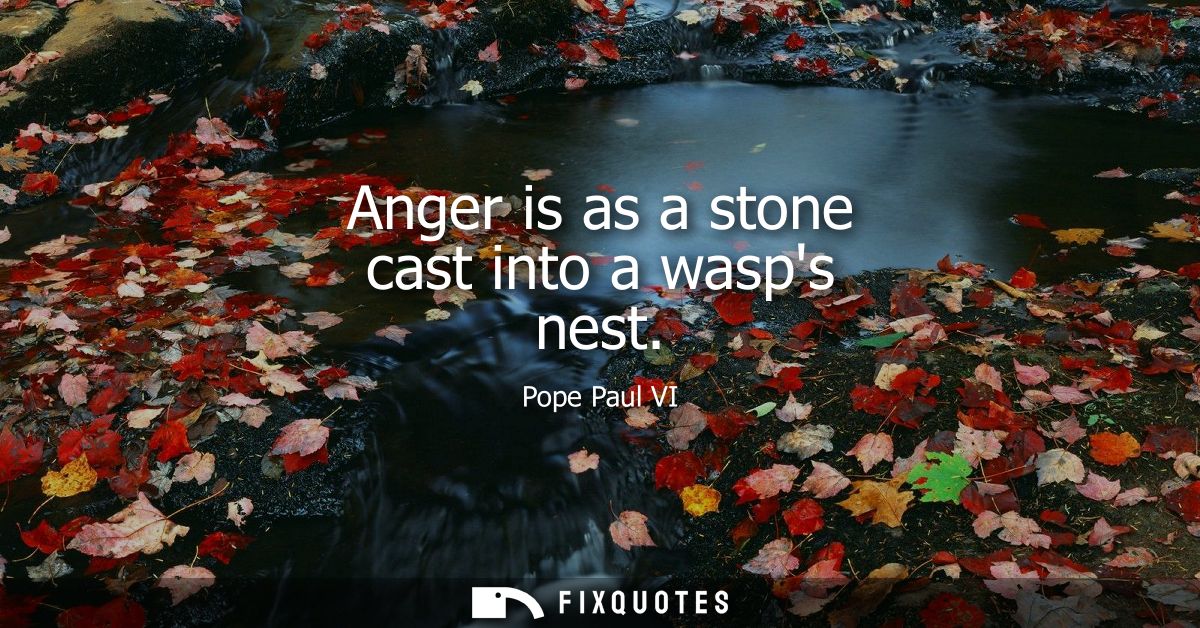"Anger is as a stone cast into a wasp's nest"
About this Quote
The quote "Anger is as a stone cast into a wasp's nest" by Pope Paul VI functions as a brilliant metaphor that illustrates the repercussions of revealing anger. The imagery utilized in the quote compares anger to a stone tossed into a wasp's nest, highlighting how disruptive and possibly damaging anger can be when it is unleashed.
At its core, the metaphor recommends that anger, much like a stone thrown into a nest of wasps, causes chaos and exacerbates a scenario, causing more trouble than one might have initially planned. This comparison highlights that anger frequently does not fix concerns however rather stirs up additional problems. When you cast a stone into a wasp's nest, you're not simply disturbing one wasp; you're inciting the whole swarm. Similarly, when you reveal anger, you run the risk of fueling a whole network of negative feelings and reactions, potentially escalating conflicts rather than solving them.
Furthermore, the quote can also be interpreted as a reflection on the uncontrollable nature of anger once it has been expressed. Just as an individual can not contain or anticipate the subsequent turmoil when a stone disrupts a wasps' nest, one can not anticipate the complete range of effects that might follow an angry outburst. This lack of control can result in regrettable actions or words that can hurt relationships and develop lasting rifts.
Furthermore, the use of the wasp's nest in this metaphor serves to remind us of the dangers connected with anger. Wasps, being aggressive and protective creatures, symbolize the prospective hostility and conflict that can emerge when anger is presented into a scenario. It enhances the idea that anger can provoke protective, hostile actions, even more entrenching a conflict rather than approaching understanding or resolution.
In conclusion, Pope Paul VI's metaphor acts as a cautionary statement about the consequences of anger. It counsels versus rash expressions of anger by stressing the disruption and damage they can trigger, prompting individuals to look for more useful and tranquil methods of addressing their grievances.
About the Author

